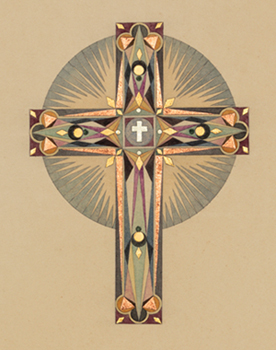 The exhibition Styx takes the tale of the ferryman Charon as its point of departure, myths about the rivers in the underworld and the battles that took place around those waters. In this exhibition Fredrik Söderberg's detailed and skilfully executed watercolours are at the same time chaotic, swarming and strict. All the grand stories seem to merge in these works where he depicts many of history's most iconic tales along with architectural historical paraphrases.
The exhibition Styx takes the tale of the ferryman Charon as its point of departure, myths about the rivers in the underworld and the battles that took place around those waters. In this exhibition Fredrik Söderberg's detailed and skilfully executed watercolours are at the same time chaotic, swarming and strict. All the grand stories seem to merge in these works where he depicts many of history's most iconic tales along with architectural historical paraphrases.The new works deal with differences and oppositions, order, chaos, movement and contemplation. There doesn't seem to be any systematic or hierarchical order in the paintings, all destinies and historical legends are woven together. He describes them as a stage, a reflection on how the gods perceived humans in the myths, as game pieces, beings that could be used for their own purposes. In these works Söderberg wants to portray the archetypal conduct of a hero, and reproduces various sacrificial scenes. An image he has previously made use of, King Domalde from Carl Larsson painting Midvinterblot, reappears in one of the paintings. The king sacrifices himself for the country to achieve a better harvest - a classic mythological motif. The well-known image of Perseus holding the head of Medusa is also included in one of the works and William Blake's image of Los entering the tomb is depicted as a fragment, the image in which he carries the sun. Söderberg portrays the idealized, his works are beautiful but the grotesque and sometimes violent and bloody is always present – in the shade of good. In it lays a duality that creates excitement and desire. On the occasion of the exhibition, we will publish the richly illustrated book Styx, with a conversation between Fredrik Söderberg and Sara Walker. |